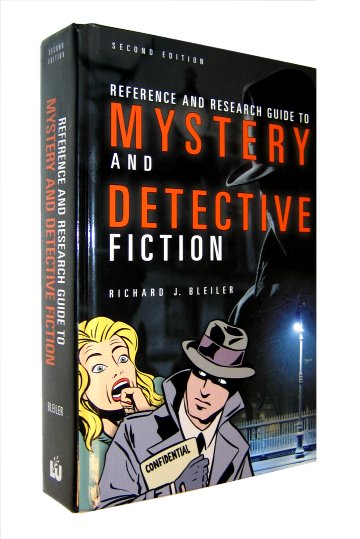

|
<<< Continued from previous page One of the references Tim would undoubtedly recommend is Lloyd Currey's Science Fiction and Fantasy Authors: A Bibliography of First Printings of Their Fiction and Selected Non-fiction. There's no question that this is the best first edition guide available for the genre, but absent Tim, how would you know this? Here's how: "244. Currey, L. W., with the editorial assistance of David G. Hartwell. Science Fiction and Fantasy Authors: A Bibliography of First Printings of Their Fiction and Selected Non-fiction. Boston, G. K. Hall & Co., 1979. xxix, 571 p. LC 79-18217. ISBN 0-8161-8242-6. "Currey's guide has become the standard bibliography of science fiction first editions since its initial release, with good reason: it is precise, authoritative, and complete for the authors and books listed. Currey is, like his two competitors, Bell and Locke, a dealer in science fiction and fantasy books, and his knowledge of first editions and points, particularly in the modern period, is unsurpassed. "The author's introduction discusses purpose, scope and coverage, arrangement, and terms of description. The bibliographies proper are listed in alphabetical order by the author's real name, and although the front matter includes a master pseudonym/real name index, this format still can create problems for the casual user (for example, well-known author Piers Anthony is filed under his legal name, Piers Anthony Dillingham Jacob). "Each writer's monographs are broken into several sections: fiction, edited fiction, nonfiction (dealing with the fantasy genre only), edited nonfiction (dealing with the fantasy genre only), prose adaptations, associational, letters, and reference (i.e., monographic critiques and bibliographies about the author). In each subsection, books are listed in alphabetical order by title. A typical author entry provides the author's full name and years of birth and death. "A typical book entry includes: title (small caps), place of publication, publisher, year of publication (but no paginations), binding style (e.g., "wrappers" = paperback; cloth bindings are described in detail), printing format, dustjackets, identification of printing and edition (including edition, printing, state, and issue), priority of issue, mass-market paper-back book stock number and price, numbered series, and serial publications. The intent here is to enable the collector, scholar, and bibliographer to properly identify the first printing states of a particular title's first edition. "No contents listings are provided for collections or anthologies, and no general non-fiction books are included for very prolific authors like Asimov and Silverberg (but associational books about fantastic literature are covered); however, fictional works outside the genre (mystery novels, for example) are listed with the rest of the author's novels and collections. With few exceptions, later reprints of the same title are unmentioned unless they must be distinguished from the original, or unless they represent first hardcover appearances of the works. There are no indices. The book is beautifully typeset and bound to library standards. Books published through 1977 are included. "Currey covers every major writer of the genre (215 authors) from H. G. Wells through Vonda N. McIntyre and Stephen King, who became prominent in the mid-1970s. His work has generally been accepted, by both collectors and dealers, as definitive for the period covered. However, the omission of page numbers from monographic listings was an unfortunate bibliographical choice, since the presence of such information is one of the ways a collector, for example, may readily distinguish between a first edition of a novel and the book club reprint. "An updated edition adding a title index and paginations is badly needed. Given this review, I'd buy Currey's guide without hesitation, and, after reading the equally detailed reviews for the two other guides (Bell's and Locke's) alluded to, I'd probably pass on them, though I might buy them later on for information on authors/titles not covered by Currey." Ok, now visualize 704 additional reviews of reference books pertaining to this same genre compiled under the following categories:
Encyclopedias and Dictionaries Are you beginning to see how useful this book could be to you? No matter how much experience you have? The selection is nothing short of amazing, and there are numerous obscure titles that perhaps even Tim hasn't come across before. Or, if your specialty was Mystery and Detective fiction, how about this book:

Libraries Unlimited has published dozens of similar books on various genres and niches. Look at the bottom of BookThink's home page under the header "Other Books," and you'll see a list: The good news is that used ex-library copies of many of these are available at a modest cost - well, I'd act quickly before your fellow booksellers buy them out! To keep abreast of Libraries Unlimited in-print publications and new releases, go here.
Want to read more articles by
< to previous article
to next article >
Questions or comments?
| Forum
| Store
| Publications
| BookLinks
| BookSearch
| BookTopics
| Archives
| Advertise
| AboutUs
| ContactUs
| Search Site
| Site Map
| Google Site Map
Store - Specials
| BookHunt
| BookShelf
| Gold Edition & BookThink's Quarterly Market Report
| DomainsForSale
| BookThinker newsletter - free
Copyright 2003-2011 by BookThink LLC
|

|
|